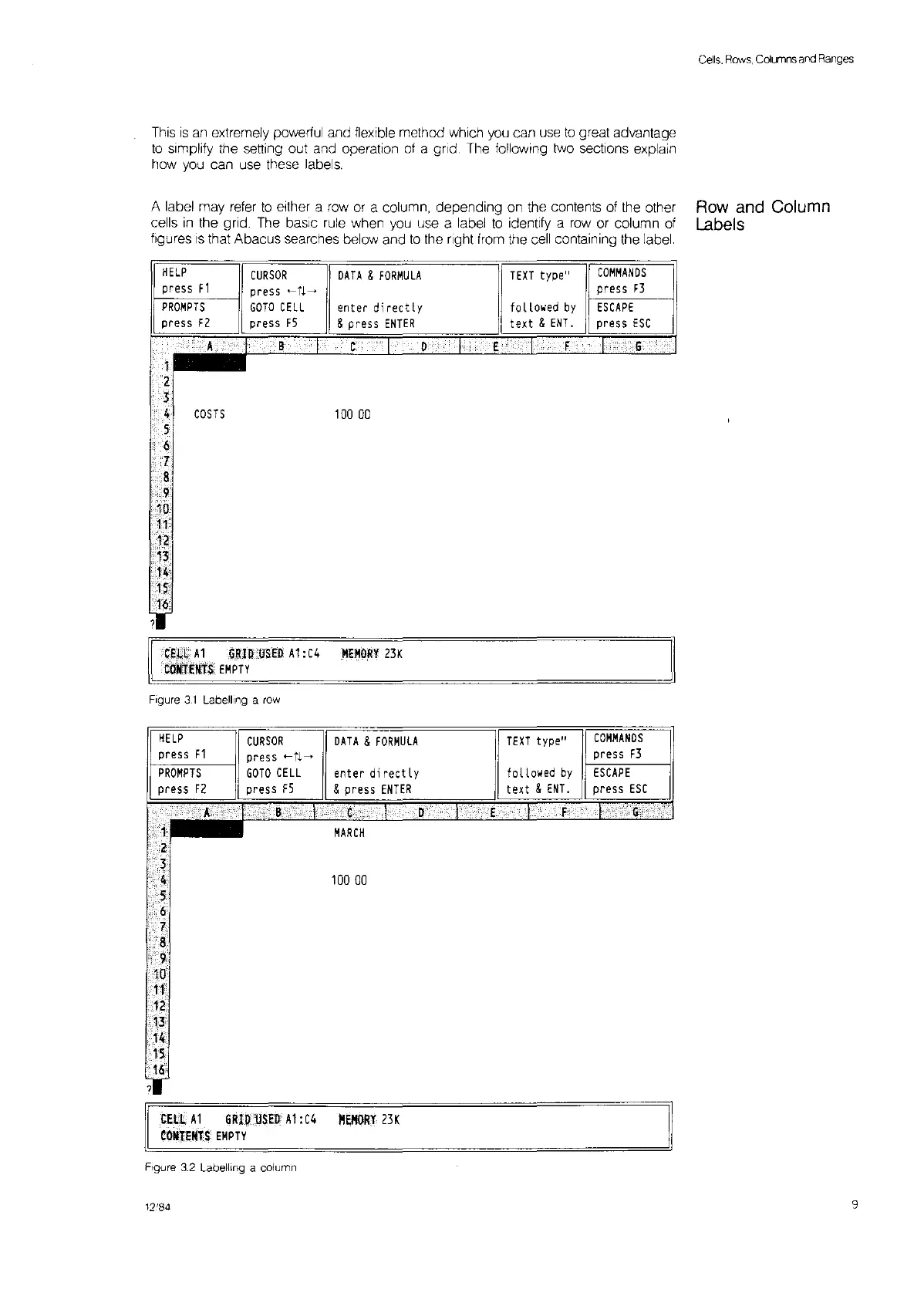This
IS
an extremely powerful and flexible method which
you
can
use
to
great advantage
to
simplify the setting out and operation
of
a grid The following two sections explain
how
you
can use these labels.
A label may reter
to
either a
row
or
a column. depending on the contents of the other
cells
in
the grid. The
baSIC
rule when
you
use a label
to
identify a
row
or column of
figures
IS
that Abacus searches below and
to
the right from the cell containing the label.
HELP
CURSOR
DA
TA
&
fORMU
LA
TEXT
type"
COMMANDS
press
f1
press
<---il---'
press f3
PROMPTS
GOTO
CELL
enter
directly
fa
llowed
by
ESCAPE
press
F2
press
FS
& press
ENTER
text &
ENT.
press
ESC
B
C
100
00
CELlA'
GRID
USED
A1
:C4
MEMORY23K
WW,t
..
"
EMPTY
Figure
3,1
Labelling a row
CellS.
Rows,
COh.mnsand
Ranges
Rowand Column
Labels
HELP
CURSOR
EPccre"s"'sccfo-'_---i1
press
+-U-
PROMPTS
GOTO
CELL
press
f2
press
fS
DATA
&
fORMULA
enter directly
& press
ENTER
MARCH
'0000
TEXT
type"
followed
by
text &
ENT.
COMMANDS
press f3
ESCAPE
press
ESC
CELLA1
GRID
USfD
A1:C4
MEMORY
23K
CONTENn
EMPTY
Figure
3.2
Labelling a column
9

